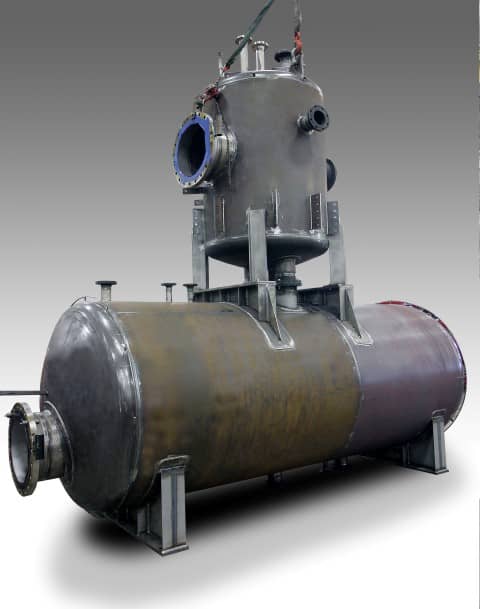Pressure Vessels, Tanks, Skids – Fabrication: An Insight into the Process and Key Considerations

Pressure vessels and tanks are essential components in various industries, such as petrochemical, refining, chemical processing, and power generation. These vessels and tanks are designed to store fluids or gases under pressure and must, therefore, be fabricated with utmost precision and care. In this article, we will delve into the fabrication process of pressure vessels and tanks, highlighting the key points that need to be considered during the process.
What are Pressure Vessels & Tanks?
Pressure vessels and tanks are closed containers designed to hold fluids or gases at a pressure higher than the ambient atmospheric pressure. They are made from various materials, including steel, stainless steel, and alloys, depending on the specific application and the type of fluid or gas they are designed to hold. These vessels and tanks come in a range of sizes and shapes, from small cylinders to large, spherical tanks.
Fabrication Process of Pressure Vessels & Tanks
The fabrication process of pressure vessels and tanks involves several stages, each requiring careful attention and expertise. Here are the key steps involved:
- Design and Engineering: The first step is to design the vessel or tank based on the specific requirements of the application. This involves determining the appropriate dimensions, materials, and other specifications to ensure the vessel or tank can safely hold the desired fluid or gas under pressure.
- Material Selection: The choice of material is crucial in the fabrication of pressure vessels and tanks. The material must be able to withstand the pressure and temperature conditions it will be exposed to, while also being corrosion-resistant and durable.
- Forming and Cutting: The selected materials are then formed and cut into the required shapes and sizes using various techniques, such as welding, rolling, and machining.
- Assembly and Welding: The formed and cut parts are then assembled and welded together to form the complete vessel or tank. Welding is a critical step, as it ensures the structural integrity and sealing of the vessel or tank. Proper welding techniques and procedures must be followed to prevent any leaks or failures.
- Inspection and Testing: After fabrication, the vessel or tank undergoes rigorous inspection and testing to ensure it meets the required safety and performance standards. This includes pressure testing, radiographic inspection, and other non-destructive testing methods.
- Finishing and Painting: The final step involves finishing the vessel or tank, which may include painting, insulation, and the installation of accessories such as valves and fittings.
Key Considerations during Fabrication
During the fabrication process of pressure vessels and tanks, there are several key considerations that must be taken into account:
- Safety: Safety is paramount during the fabrication process. Strict safety protocols and procedures must be followed to prevent accidents and injuries. This includes the use of protective equipment, proper handling of materials, and adherence to welding and cutting safety standards.
- Quality Control: Quality control is essential to ensure the fabricated vessel or tank meets the required specifications and standards. Strict quality control procedures should be implemented, including material testing, welding procedure qualification, and inspection at various stages of the fabrication process.
- Compliance with Regulations: Pressure vessels and tanks are subject to strict regulatory requirements and standards. Fabricators must ensure that their processes and products comply with all relevant regulations and standards, such as those set by the American Society of Mechanical Engineers (ASME) or other international standards organizations.
- Cost-Effectiveness: While safety and quality are paramount, cost-effectiveness is also an important consideration. Fabricators should strive to optimize their processes and material usage to reduce costs without compromising on safety and quality.
In conclusion, the fabrication of pressure vessels and tanks is a complex and specialized process that requires careful attention to detail and adherence to strict safety and quality standards. By understanding the key steps involved and considering the critical considerations mentioned above, fabricators can ensure the production of safe, reliable, and cost-effective pressure vessels and tanks that meet the demands of various industries.
